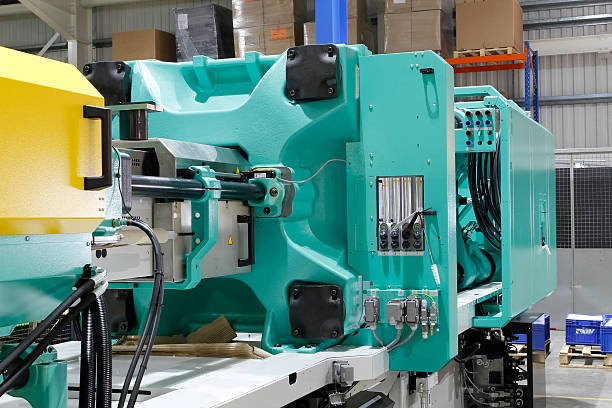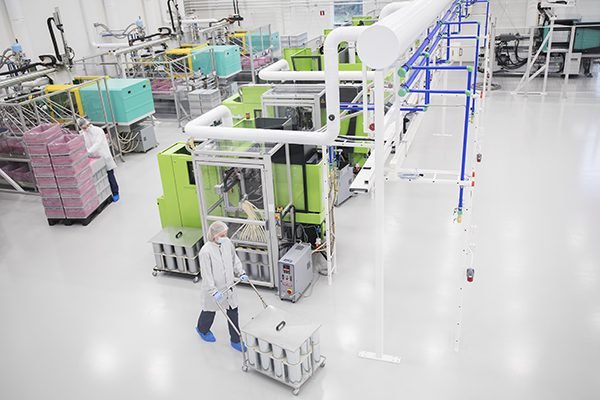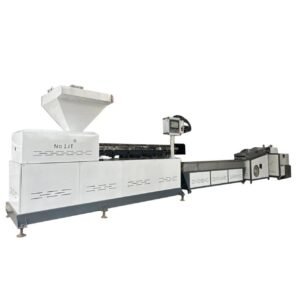Plastic injection molding machine recommendations
Choose us to buy plastic injection molding machine
High performance and precision
Our machines adopt advanced control systems and high-precision mold manufacturing technology to ensure that the molding quality of each product reaches the highest standards. This means that not only is the production efficiency high, but also the product error is extremely small, meeting the needs of precision manufacturing.
Easy to operate
Our injection molding machines are designed to be user-friendly, allowing both beginners and experienced operators to get started quickly. The machine’s operation interface is simple and intuitive, which greatly reduces operational complexity and human errors, and improves the continuity and stability of production.
Energy saving and environmental protection
During the design and manufacturing process, we pay special attention to energy efficiency ratio. Our machines use the latest energy-saving technology, which can save more electricity and resources than traditional models, reduce production costs, and also reduce the impact on the environment.
Excellent after-sales service
When you choose us, you’ll also enjoy industry-leading customer support and service. We offer comprehensive technical support and regular maintenance plans to ensure your machines are running in top condition for a long time, while our rapid response team is ready to resolve any questions you may have.

Come and get in touch with us
Frequently Asked Questions about Plastic Injection Molding Machine
This is usually caused by insufficient injection pressure or injection speed that is too slow. You can try to increase the injection pressure of the machine or increase the injection speed. In addition, check whether the mold temperature is appropriate. Too low a mold temperature can also cause short shots.
Warpage deformation is often related to mold temperature, cooling time and uneven product thickness. Adjusting the temperature balance of the mold, extending the cooling time, or optimizing the product design to ensure uniform thickness can effectively reduce warpage.
Mold accumulation may be caused by excessive nozzle temperature or improper holding time and holding pressure settings. Reduce the nozzle temperature and adjust the pressure holding parameters to ensure that the plastic is fully cooled and solidified in the mold, which can solve the problem of material accumulation.
Silver streaking is usually caused by moisture or other impurities in the raw materials. Make sure the material is fully dry before use and check the material for contamination. Appropriately increasing the back pressure and reducing the injection speed will help improve the fluidity of the plastic in the mold and reduce the phenomenon of silver streaking.
Plastic injection molding machine case

Precision molding of automotive parts
In the automotive industry, injection molding machines are used to produce complex plastic parts such as dashboards, air conditioning vents and interior trim parts. By using high-precision injection molding technology, components are ensured to have a high degree of consistency and durability, meeting the strict standards of the automotive industry.

Medical device disposables production
In this case, the injection molding machine is used to produce various disposable medical supplies such as syringes and test tubes. The injection molding machine can operate in a strict sterile environment to ensure that the product meets medical and health standards, while the efficient production capacity can meet the needs of large-scale production.

Smartphone accessories manufacturing
In the consumer electronics industry, injection molding machines are used to produce plastic accessories for smartphones, such as cases and buttons. The use of injection molding technology not only improves production efficiency, but also enables accurate reproduction of complex designs to meet the market’s dual needs for aesthetics and functionality.
Comprehensive Guide to Plastic Injection Molding Machine
Plastic injection molding is an essential process in manufacturing, enabling the mass production of highly detailed plastic components. This guide explores the technology behind injection molding machines, showcasing their importance in industries ranging from automotive to consumer goods.
The Basics of Injection Molding
Plastic injection molding involves the injection of molten plastic into a mold where it cools and solidifies into the final part. This technology has evolved over decades, becoming a cornerstone of modern manufacturing due to its efficiency and versatility.
Main Components of Injection Molding Machines
- Injection Unit: Heats the plastic and injects it into the mold.
- Clamping Unit: Holds the mold in place during injection and cooling.
- Mold System: The custom-designed part that shapes the plastic.
- Drive System: Can be hydraulic, electric, or hybrid, powering the machine.
- Control System: Manages the operation parameters and ensures consistency.
Types of Injection Molding Machines
- Hydraulic Machines: Known for their robustness and ability to produce large parts.
- Electric Machines: Offer high precision, energy efficiency, and faster speeds.
- Hybrid Machines: Combine the best of hydraulic and electric benefits. The choice depends on production needs, precision, and budget constraints.
Process of Injection Molding
The injection molding process includes:
- Material Preparation: Drying the polymer to prevent defects.
- Melting: Heating the plastic to a molten state.
- Injection: Injecting the plastic into the mold under high pressure.
- Cooling: Allowing the part to solidify within the mold.
- Ejection: Removing the cooled part from the mold. These steps are controlled precisely to maintain quality and efficiency.
Materials Used in Injection Molding
A variety of plastics are used, such as ABS (acrylonitrile butadiene styrene), polypropylene, and polycarbonate. Selection is based on the mechanical properties required, such as toughness, flexibility, and resistance to heat and chemicals.
Mold Design
Effective mold design is crucial for successful injection molding. Considerations include the number of cavities, mold material, and the design’s impact on the final product’s appearance and function.
Applications of Injection Molding
Injection molding is pivotal in:
- Automotive: Producing parts like dashboards and bumpers.
- Consumer Electronics: Casings for gadgets.
- Medical Devices: Components that require sterility.
- Packaging: Containers and caps.
Advanced Technologies and Innovations
Recent advancements include the integration of automation to reduce labor costs, the use of 3D printing for creating complex mold designs, and the adoption of Industry 4.0 technologies for smarter production processes.
Quality Control and Optimization
Monitoring and optimizing the molding process can prevent defects such as warping or incomplete filling. Techniques include adjusting the molding parameters and using quality control tools to monitor production.
Environmental Impact and Sustainability
The plastic industry faces environmental challenges. Innovations in biodegradable plastics and recycling initiatives are making injection molding more sustainable.
Future Trends and Developments
The future of injection molding lies in materials that enhance product life and functionality, along with technologies that further increase automation and precision.
Conclusion
Injection molding remains a dynamic field of manufacturing, vital for producing high-quality plastic parts. As technology advances, the capabilities and applications of injection molding machines continue to expand.
Additional Resources
For those interested in deeper insights or staying updated with industry trends, resources like the Society of Plastics Engineers or trade shows like NPE (The Plastics Show) are invaluable.
This guide is designed to be accessible yet thorough, providing a solid foundation for understanding the complexities and capabilities of plastic injection molding machine.

